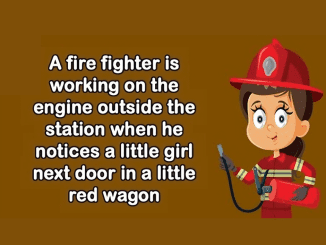In psychology and visual perception, there exists a captivating phenomenon where our minds see familiar patterns, particularly faces, in random objects or textures. This intriguing quirk, known as pareidolia, is perfectly exemplified in instances where what seems like an ordinary tile floor or wall reveals something more compelling—a faint face—upon closer inspection.
What is Pareidolia?

Pareidolia occurs when the brain interprets random stimuli—such as shapes, patterns, or sounds—as something meaningful, often a face or figure. This explains why we might see animals in clouds, faces in rock formations, or, in this case, a visage in a worn floor tile.
Our brains are evolutionarily wired to recognize faces, an essential trait that helped our ancestors identify friends, foes, and other beings from a distance. This facial recognition ability is so powerful that even with only a vague resemblance, our brains fill in the gaps, making us see faces where none actually exist.
The Tile Face: A Closer Look
In the image above, the rough texture of a tile outlines what appears to be a face, complete with eyes, a nose, and a mouth. The “eyes” might be darker spots on the tile, the “nose” a central smudge, and the “mouth” a faint curve or crack. This ghostly face seems almost as if it’s a hidden character peering out, waiting to be noticed.
This instance of pareidolia transforms an ordinary object like a floor tile into something mysterious and artistic. For some, this face might evoke a sense of wonder or even a slight eeriness, as if the inanimate world around us is subtly coming to life in unexpected ways.
Why Do We See Faces in Objects?
Seeing faces in inanimate objects is more common than you might think and isn’t limited to tiles or wall patterns. This tendency stems from our evolutionary need for social connection and survival. Quickly identifying faces was crucial for early humans in recognizing allies, detecting threats, and fostering community bonds. Over time, our brains became exceptionally good at picking up even the slightest facial cues, sometimes to the point of over-interpretation.
Scientists suggest that this ability to see faces has played a significant role in our ability to read emotions, understand social interactions, and even in the creation of art. It highlights the brain’s remarkable capacity to find meaning in the world, even when that meaning is purely in our minds.
The Artistic Side of Pareidolia
Beyond its scientific roots, pareidolia has an artistic dimension. Artists throughout history have been inspired by finding hidden images in the world around them. This art form encourages viewers to look beyond the obvious and discover beauty in the unexpected.
The face seen in the tile could be considered natural art—an accidental masterpiece shaped by time, wear, and our imagination. It’s a reminder that art can be found anywhere, even in the most mundane places, if we take a moment to truly observe and appreciate our surroundings.
The Psychology Behind Pareidolia

From a psychological perspective, pareidolia reflects our brain’s desire to organize chaos into recognizable forms. This tendency is not just about recognizing faces but also about making sense of our environment. Our brains are constantly working to identify patterns and assign meaning to them, a process that happens so automatically that we often don’t realize it.
Pareidolia also plays into our emotional states. For example, someone feeling lonely or in need of connection might be more likely to see faces in inanimate objects. It’s a subtle way our brains comfort us by creating familiarity and a sense of presence, even when we’re physically alone.
Practical Implications of Pareidolia

While pareidolia is often seen as a harmless quirk, it has practical implications, too. In design and architecture, understanding how people perceive patterns can influence how spaces are created. Designers might intentionally incorporate elements that play on pareidolia to evoke certain emotions or reactions from those who experience the space.
Moreover, pareidolia is used in psychological assessments and creativity tests, where the ability to see patterns in randomness can be an indicator of creative thinking. It also has applications in AI and machine learning, where understanding how humans perceive patterns can help improve algorithms that mimic human vision.
Conclusion: Finding Magic in the Mundane
The next time you walk across a tiled floor, stare at a cloud-filled sky, or gaze at a textured wall, take a closer look—you might find a face staring back at you. Pareidolia is more than just a mind trick; it reveals how our brains interpret the world and find wonder in the ordinary. Whether it’s a face on a tile or a figure in the shadows, these moments of recognition are small reminders of the magic hidden in everyday life.
In a world filled with randomness, pareidolia offers a comforting glimpse into our brain’s desire to connect, create, and find meaning. So, embrace these unexpected encounters with faces in your surroundings—they’re a testament to the incredible power of human perception


